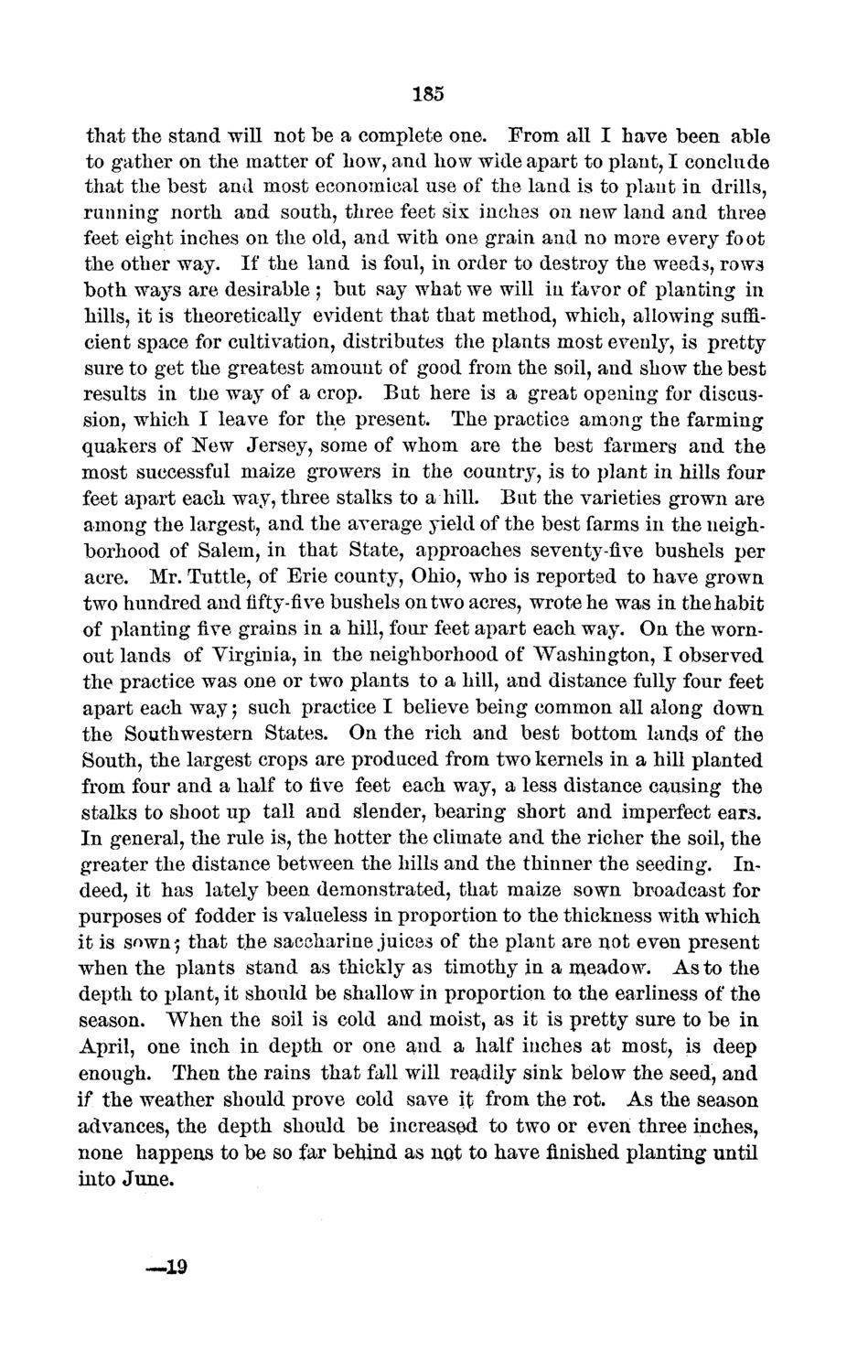| |
| |
Caption: Board of Trustees Minutes - 1872
This is a reduced-resolution page image for fast online browsing.

EXTRACTED TEXT FROM PAGE:
185 that the stand will not be a complete one. From all I have been able to gather on the matter of how, and how wide apart to plant, I conclude that the best and most economical use of the land is to plant in drills, running north and south, three feet six inches on new land and three feet eight inches on the old, and with one grain and no more every foot the other way. If the land is foul, in order to destroy the weeds, rows both ways are desirable ; but say what we will in favor of planting in hills, it is theoretically evident that that method, which, allowing sufficient space for cultivation, distributes the plants most evenly, is pretty sure to get the greatest amount of good from the soil, and show the best results in tne way of a crop. But here is a great opening for discussion, which I leave for the present. The practice among the farming quakers of Kew Jersey, some of whom are the best farmers and the most successful maize growers in the country, is to plant in hills four feet apart each way, three stalks to a hill. But the varieties grown are among the largest, and the average yield of the best farms in the neighborhood of Salem, in that State, approaches seventy-five bushels per acre. Mr. Tuttle, of Erie county, Ohio, who is reported to have grown two hundred and fifty-five bushels on two acres, wrote he was in the habit of planting five grains in a hill, four feet apart each way. On the wornout lands of Virginia, in the neighborhood of Washington, I observed the practice was one or two plants to a hill, and distance fully four feet apart each way; such practice I believe being common all along down the Southwestern States. On the rich and best bottom lands of the South, the largest crops are produced from two kernels in a hill planted from four and a half to five feet each way, a less distance causing the stalks to shoot up tall and slender, bearing short and imperfect ears. In general, the rule is, the hotter the climate and the richer the soil, the greater the distance between the hills and the thinner the seeding. Indeed, it has lately been demonstrated, that maize sown broadcast for purposes of fodder is valueless in proportion to the thickness with which it is sown$ that the saccharine juices of the plant are not even present when the plants stand as thickly as timothy in a meadow. As to the depth to plant, it should be shallow in proportion to the earliness of the season. When the soil is cold and moist, as it is pretty sure to be in April, one inch in depth or one and a half inches at most, is deep enough. Then the rains that fall will readily sink below the seed, and if the weather should prove cold save it from the rot. As the season advances, the depth should be increased to two or even three inches, none happens to be so far behind as not to have finished planting until into June. —19
| |